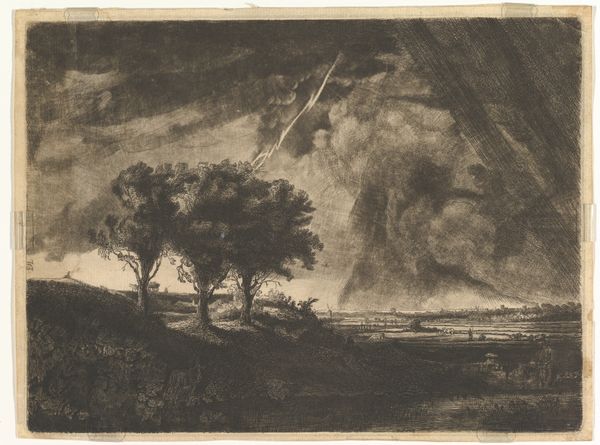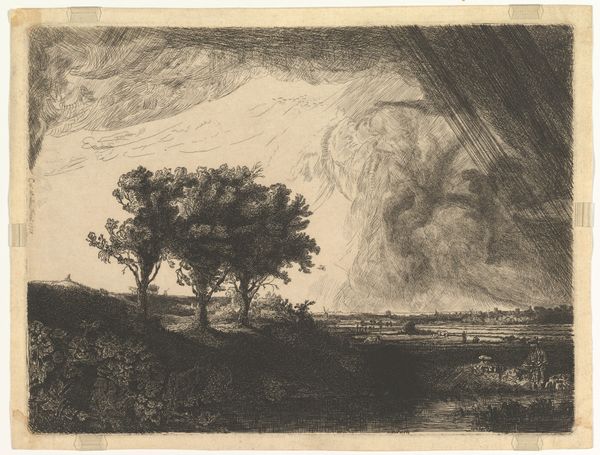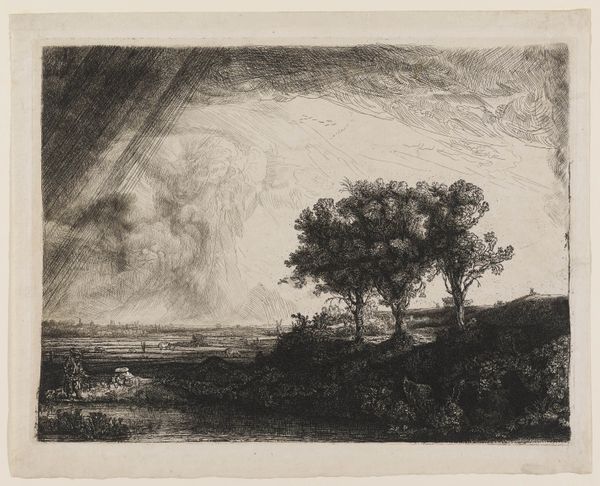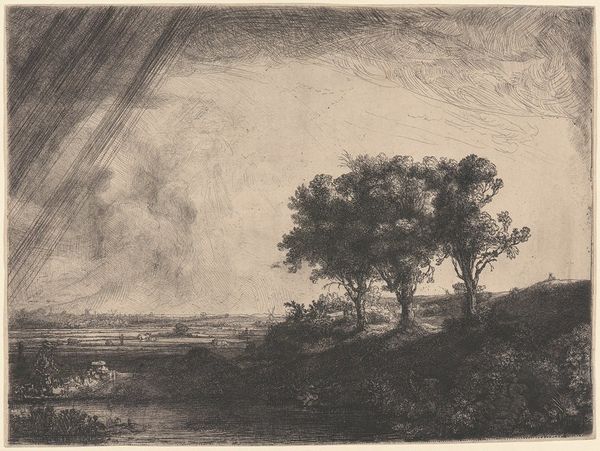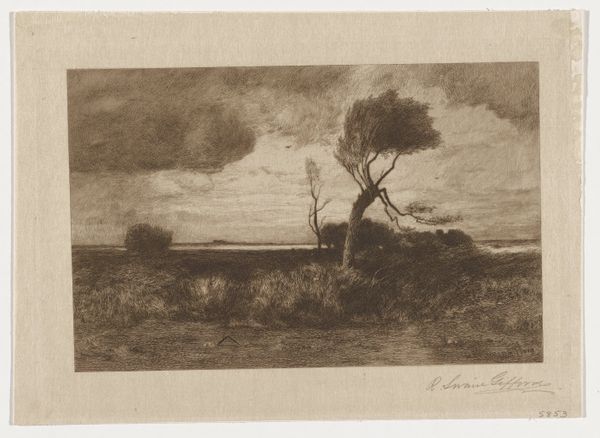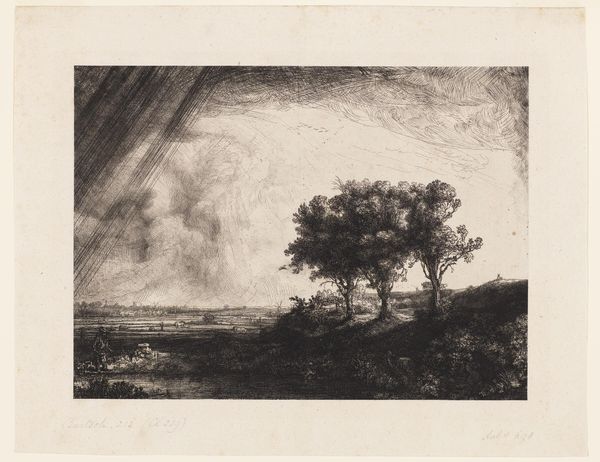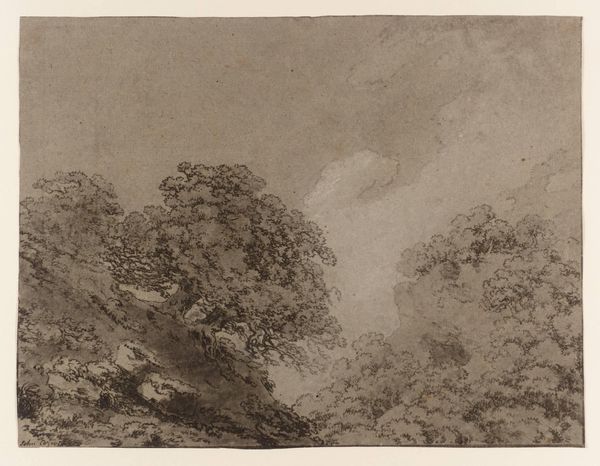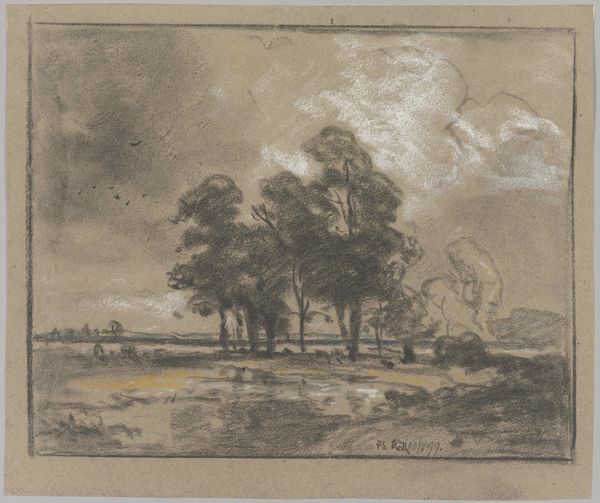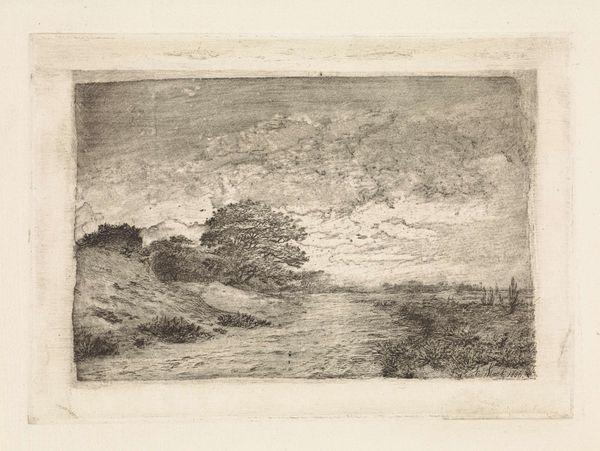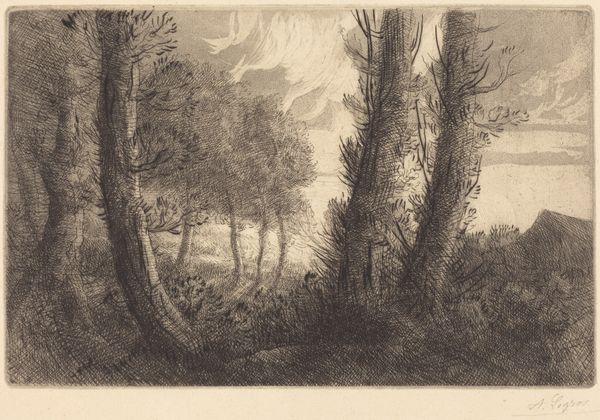
drawing, print, etching, engraving
#
tree
#
drawing
# print
#
etching
#
old engraving style
#
landscape
#
engraving
Dimensions: plate: 8 1/4 x 11 in. (21 x 28 cm) sheet: 8 7/16 x 11 1/4 in. (21.5 x 28.5 cm)
Copyright: Public Domain
Curator: Here we have Captain William E. Baillie's "The Three Trees, after Rembrandt," a compelling engraving and etching from 1758. What strikes you most immediately about this piece? Editor: It's powerfully atmospheric. The heavy sky, the looming trees – it conveys a real sense of foreboding and almost biblical drama. The contrast is stark, the light feels oppressive. Curator: Baillie was, after all, a military man who saw plenty of social disruption and unrest. This print exists as part of a complex history surrounding the accessibility of images, because while Baillie was interested in Rembrandt’s composition, he wasn't committed to his vision. Editor: That’s fascinating. So it's not just an innocent copy. Were these images distributed widely or mainly seen among a specific circle? What did its acquisition look like at that time, compared to now? Curator: Prints had a vital role in disseminating knowledge and culture to a broad public. Etchings were comparatively affordable. While access wasn’t universally open, the imagery still offered exposure. It is in collections such as this, where people have gathered these etchings from a far remove, that access to understanding is made available. Do you sense a romantic sensibility in this? I read so much anxiety, looking at those churning storm clouds above. Editor: I do. I feel there is a sublime beauty amidst the tension. The scene’s constructed to heighten that. Even the figures on the hill – rendered so small – enhance our sense of vulnerability within this grand, indifferent landscape. But I can see a different perspective—how this recalls the upheavals witnessed throughout colonial contexts, the struggle to survive or, really, thrive in times of oppression. It raises interesting questions around identity, race, and our connections to nature. Curator: Absolutely. And beyond this being an example of printmaking during this time, we see art-historical connections at work in social change. In this sense, we come to understand that art has been a tool of resistance. Editor: This work allows for multiple lenses, as it encourages discourse with the past. A potent piece offering layers for interrogation. Curator: Indeed, and one which allows for endless reflection on society.
Comments
No comments
Be the first to comment and join the conversation on the ultimate creative platform.
